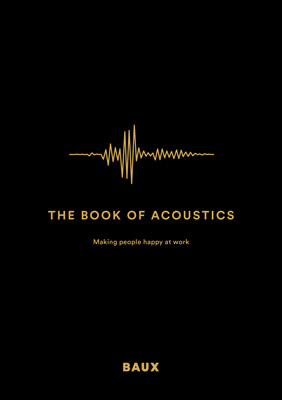Chapter 3.0 Types of acoustic treatment
3.2.1 Sound absorbers
Sound absorbers are designed to trap sound energy and prevent some of it from being reflected back into the room. The traditional absorber is generally made from porous and fibrous materials such as foam, mineral wool, and textiles. But absorbers can even include materials made of metal or wood. The absorptive abilities of such materials vary significantly depending on sound frequency. For this reason, a variety of shapes, styles and thicknesses are available to meet different absorption requirements.
Three types of absorbers
1. Porous absorbers:
Thick and porous materials that trap sound energy in a cellular structure. The trapped sound energy turns into heat as oscillation is dampened by friction. Examples: carpets, textiles, aerated plaster, mineral wool and open-cell foam.
2. Panel Absorbers:
Flexible and non-porous materials that bend and vibrate as they trap sound energy in their enclosed interiors filled with air volume. Examples: flat panels made of wood, metal, gypsum and plastic with interiors filled with mineral wool or foam.
3. Resonators:
Perforated materials that trap sound energy in holes or slots of different depths where it is then converted into oscillation energy. Resonators can be customised to reduce a specific set of frequencies. Examples: perforated wood, metal and gypsum board.
Use to:
- Dampen sounds within a space
- Reduce sound reflections and echos
- Shorten reverberation time
- Improve speech intelligibility.

